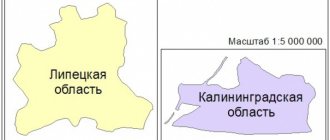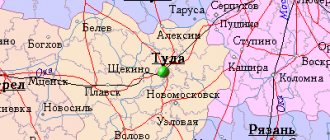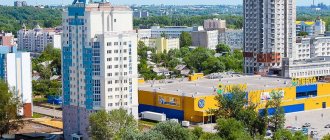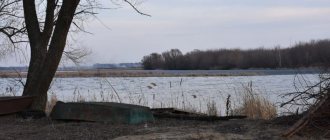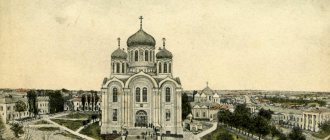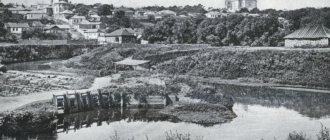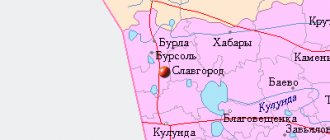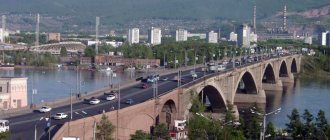General information and history of Yelets
Yelets is one of the most mysterious cities in Russia - a regional center, part of the Lipetsk region.
Once upon a time there was a fortress on the banks of the Bystraya Sosna River, which flows into the Don. Today, Yelets, not yet fully studied by historians, has not yet determined its true time of origin. It has been mentioned in chronicles since 1146 as a bastion on the southeastern border, protecting Russian lands from raids by the Polovtsians, Pechenegs, and Tatar-Mongols. The time when Prince Svyatoslav Olegovich passed through Yelets to Ryazan, as stated in the chronicle, is considered to be the year the city was founded.
Yelets, Ascension Cathedral
But it is obvious that the city arose much earlier - according to unconfirmed data, in the second half of the 10th century. Presumably, the founding date of the city could be 986. However, it was specifically recognized in 1389, when a historical meeting between Prince Yuri Yeletsky and Metropolitan Pimen took place at the confluence of the Don and Voronezh rivers.
Until the time Yelets passed into the domain of Moscow, it was listed as a military fortress and experienced blows from major attacks: the Tatar-Mongol yoke, the troops of Khan Akhmat Temir, the troops of Khan Uzbek, Khan Togai, the Battle of Kulikovo also did not bypass the fortress city . In 1395, Yelets was devastated by the troops of Tamerlane. But an amazing fact still remains a mystery - why Tamerlane, who successfully captured the fortress city, did not advance to Russia further than Yelets. One day the conqueror turned his troops back, justifying his actions with a prophetic dream about this city, in which he saw saints with a great army defeating him.
Yelets courtyards
Since ancient times, the city of Yelets, in all its splendor, has been considered the holiest city in Russia, with many temples, churches and monasteries. One can take the event with Tamerlane that happened many years ago as a miracle.
The most significant military events associated with the city
The Yeletsk offensive operation was a front-line offensive operation of the Red Army during the Great Patriotic War, undertaken in the period from December 6 to 16, 1941, by troops of the right wing of the Southwestern Front during the counteroffensive near Moscow. The purpose of the operation is to encircle and destroy the enemy group in the area of the city of Yelets, and then strike in the rear of the troops of the 2nd German Tank Army. As a result of the Yelets operation, the troops of the right wing of the Southwestern Front, having advanced 80-100 km, eliminated the Yelets ledge, encircled and destroyed more than 2 divisions, and inflicted a serious defeat on the 2nd German Army. They diverted part of the forces of the 2nd Tank Army, thereby providing significant assistance to the troops of the left wing of the Western Front, who were performing the main task. A characteristic feature of the Yelets operation is its preparation in a limited time. It was carried out at a relatively high pace, in difficult winter conditions.
The enemy continued to put pressure on the 13th Army and the 3rd Army of General Ya.G., which was defending to the north. Kreizer. To the south, in the direction of Kastornoye, the enemy’s 9th Panzer and 16th Motorized Divisions failed to advance. The Military Council of the Southwestern Front decided to defeat the German Yelets group, which would improve the situation on the neighboring Western Front. In the rear of the 13th Army in the Terbuna area, a cavalry-mechanized group of troops was urgently created from the front reserves under the command of Lieutenant General F.Ya. Kostenko: 5th Cavalry Corps, 1st Guards Rifle Division, 129th Tank and 34th Motorized Rifle Brigades.
The counteroffensive against the German 2nd Field Army began on the northern flank of the 13th Army by the actions of a mobile group of troops under General K.S. Moskalenko, who pulled back part of the forces of the enemy group. From the border of the city of Efremov, the enemy was attacked by formations of the 3rd Army of General Ya.G. Kreizer. The main blow was dealt by the troops of F.Ya. Kostenko. For the German command, the appearance of this group of troops on December 7 was a complete surprise. The 5th Cavalry Corps and the 1st Guards Rifle Division broke through into the flank and rear of the enemy group in the general direction of Yelets and to the west. The 34th Motorized Rifle Brigade was sent to Livny to deeply envelop the enemy. At the same time, the 13th Army was advancing to the southwest. All this threatened the complete encirclement of the German group. In the battles near the city of Yelets, two enemy infantry divisions were completely defeated. The enemy lost 12 thousand killed and wounded on the battlefield. On December 12, General Kryuchenkin’s cavalrymen destroyed the corps headquarters (the corps commander managed to leave the headquarters by plane). Encircled enemy troops tried to fight their way to the west, fiercely attacking the 3rd and 32nd Cavalry Divisions. On December 15, the commander of the German 134th Infantry Division, General Kochenhausen, personally led the encircled Germans to break through. The cavalrymen held out, General Kochenhausen was killed in this attack, the remaining Germans surrendered or fled into the forests. The Chief of the German General Staff, F. Halder, sadly wrote about this: “the command of the troops on the front between Tula and Kursk suffered bankruptcy.”
On December 18, the Bryansk Front was recreated consisting of the 61st, 3rd and 13th armies. The front was commanded by Colonel General Ya.T. Cherevichenko. Having regrouped his troops, he led them on the offensive, and by the beginning of January the Bryansk Front reached the line Belyov - Mtsensk - Verkhovye - north-west of Liven.
Climate and ecology
Today Yelets is a quiet small town with beautiful natural landscapes and a temperate climate. Winters here are moderately cold, and summers are warm and sunny. The average air temperature in summer is +20 C, in winter -10 C. Precipitation per year is about 500 mm. Dry, strong thunderstorms are sometimes observed in the summer.
Elets in winter
The ecological state of the city, due to modernity, as in many cities, has its drawbacks. Every year, floating debris accumulates near the pontoon bridge. On the banks of the Bystraya Sosna River you can find heaps of household waste. This is most likely due to the fact that waste collection in the city is not well organized and residents are forced to create appropriate landfills.
However, the struggle for the environment in the city is ongoing continuously. Schoolchildren and students organize entire campaigns to clean up the environment in order to make their hometown cleaner and even more beautiful. It should be noted that the city itself, in comparison, is orderly thanks to the vigilant residents of Yeltsin.
Until 2012, the main source of pollution was considered to be the Sugar Factory, which discharged wastewater into the B. Sosna River, which led to a violation of the hydrochemical regime of the river. But, according to media reports, the discharge of contaminated wastewater has been stopped since January 12, 2012. And today the B. Sosna River is considered environmentally friendly and accessible for beach holidays and swimming.
Perpetuating memory (Main monuments related to the Second World War)
- Mass grave of Soviet soldiers who died in battles with the fascist invaders.
- Memorial complex to participants of the revolution and civil war, Soviet soldiers and partisans who died during the liberation of the city from fascist invaders in December 1941.
- Square of victory.
- Stele "City of Military Glory".
- The monument to the Soviet soldier was inaugurated on May 8, 1967, on the 20th anniversary of the Victory over Nazi Germany. Participants in the Great Patriotic War delivered here on October 21, 1967, a torch lit from the flame of the Eternal Flame at the Tomb of the Unknown Soldier in Moscow. Since then, a quivering flame has been burning at the sacred obelisk without going out.
Population of Yelets
Yelets has always attracted tourists and immigrants with its beauty and uniqueness. Despite the fact that during the civil wars and post-revolutionary times, as well as in connection with the Second World War, the population decreased noticeably, from 1950 to the present day there has been a significant increase. In just 5 years from 1950 to 1954, the population of the city of Yelets increased by 70 thousand inhabitants.
Due to the movement of villagers to the city in the 60s, when industry was rapidly developing and more and more workers were needed, the population acquired a simply frantic growth rate. In the 90s, migration to the city did not stop, but decreased somewhat. At the end of the same 90s, the population of Yelets reached 120 thousand people.
Maslenitsa celebrations
In the 2000s, the population briefly became stable and subsequently declined slightly. According to data at the beginning of 2014, the population of the city of Yelets was 106,377 people. Such statistics over the past 10 years are due to the fact that people are now moving to larger cities and regional centers.
The doors of the Yelets Hotel are always open for city guests. However, this is the only hotel in the city, but it has a sufficient number of rooms. To accommodate everyone.
The city of Yelets is home to several universities - branches of universities in other regions and the well-known Yelets State University. Bunin, allowing local and visiting students to receive a decent public education in various specialties. Due to this, a large percentage of the city's population is between 18 and 25 years old. Many people who come to Yelets for the first time meet practically only young people on the streets, which creates a corresponding impression. You can often hear about the city of Yelets that it is a student city.
Yelets State University named after. Bunina
Many outside observers and guests of the city, passing through or on vacation, define the moral level of the residents as calm and friendly people. It’s not so often that you can find noisy companies on the streets after midnight. Although their complete absence cannot be denied either. All public events close, as a rule, no later than twelve at night.
History of conferring the honorary title “City of Military Glory”
During the Great Patriotic War, Yelets and the railway junction for a long time were an important front base in the area of the Oryol bridgehead and the Kursk-Belgorod arc.
In addition, two field airfields constantly maintained contact with the partisans in the Bryansk forests and in Belarus. Thousands of Yeltsand residents took part in hostilities, over 8 thousand were awarded orders and medals, several Yeltsand residents were awarded the title of Hero of the Soviet Union. The war brought Yelets, as well as the entire Soviet country, heavy losses. More than nine thousand Yelets residents did not return from its fields. Significant damage was caused to the city's economy. The barbaric bombings and temporary occupation caused enormous damage to the railway junction, industry, urban and housing services of the city. Thanks to the heroic work of Yeltsin residents, the wounds are quickly healed. Already in 1944, 11 enterprises of union and republican subordination, 24 enterprises of local industry and trade cooperation were restored and were producing products. A network of schools and special institutions, cultural and community institutions began to operate. Work on the restoration and development of the national economy after the Great Patriotic War was carried out with unprecedented growth. By 1950, the pre-war level of industrial production had been surpassed.
Districts and real estate of Yelets
Yelets Map
Yelets is located 80 km from Lipetsk, the regional center. The city's territory extends over 65.1 square meters. km. Initially, the city was built on the left bank of the Bystraya Sosna River, after which, thanks to the nearby villages and settlements that eventually merged into the city, it grew and occupied both banks.
Lenin Square
In addition to the small settlements that joined, the city acquired new areas through construction: the 7th microdistrict, New Homes, Elta, Stroitel. Moreover, relative to the last 3 districts built in the 70s-80s, the 7th microdistrict is young and continues to be built up with new high-rise buildings.
From the “old” city, in our time there are separate, designated areas, the names of which are present only in the vocabulary of local residents and are not official, such as: Luchok, Zaton, Argamach, Kamenya, Chernaya Aleksandrovskaya, Lamskaya, Olshanets, etc. The village of Lava is also merged with the city and is practically not mentioned in any context as a suburb, but stands out as a remote area of the city with a private sector. Most, as mentioned above, of the names of the city's districts are based on the names of former villages.
Dace. Onion
But there are also areas of “industrial” origin. For example, the Elta district is named after the former house, on the territory of which they were once built for factory workers.
The entire right bank of the river is called Zasosna, i.e. the area that is located behind Bystraya Sosna, the main water resource of Yelets. In Zasosna, local residents identify a small area called the Red Barracks, where in ancient times there were military barracks. Their buildings are built of red brick, which gives them their name - Red. Today they house one of the buildings of the Yelets State University named after Bunin.
Due to the sustainable preservation of ancient manor houses, which are more than a hundred years old, the cost of real estate in the city does not depend on the distance from the center, but quite the opposite - on the comfort and convenience of the house. Apartments in modern new buildings located on the outskirts of the city are valued much higher than the central, once majestic houses that once belonged to the nobility, and today are divided into apartments. This is due not only to the dilapidation of the building, but also to the lack of basic amenities, such as running water, for example.
Houses of the old town
Many old houses in the central region are not equipped with toilets. node and water supply. Most often this is due to the fact that the layout and age of the buildings do not allow such installations. In the city center you can still find pumps where residents collect water with buckets.
Fans of historical values will certainly be interested in such a house in the style of past centuries. The most valuable, of course, are stone houses. But in order to purchase such a house as personal property, you will have to buy out entire apartments located in this house. A lot of money will be needed for the restoration of the building. But the result for connoisseurs is worth it.
In Yelets, ancient wooden houses, relatively small, are still alive. The disadvantage of these houses is perhaps low ceilings, but the advantage of meter-high walls compensates for the first. They are always warm in winter, and always cool in summer. Their cost can be relatively low.
The average price for apartments in old buildings in the central region ranges from 800 thousand to 1 million rubles. It is quite difficult to determine the cost by the number of rooms in the apartment; the price is based on the total area. This is due to the fact that ancient houses have a unique layout and are far from standard in relation to each other.
In modern new buildings (panel and brick houses), the apartments are, without a doubt, well-equipped. For example, the 7th microdistrict, which has 9-story new buildings, boasts modern spacious apartments, but it is located practically near the M-4 highway. However, based on the fact that the area of the city is not so large, the distance from the center is not very large - a 40-minute walk. The average cost of a one-room apartment in this area is approximately RUB 1,100,000.
Typical high-rise buildings of the 7th microdistrict
Private houses on the picturesque outskirts of the city with cozy courtyards, which Yerevan residents like to decorate in an old style, are in great demand.
City infrastructure
The infrastructure of the city of Yelets continues to develop. City authorities are trying to regulate rising utility tariffs. It is not always easy for ordinary people to correctly assess the increase in tariffs and compare them with the actual promised percentage increases. Therefore, new receipts arriving every month still surprise with their changes towards an increase in the total amount for utilities.
This urgent problem has existed for several years. But it should be noted that various programs are being developed for the housing and communal services complex of the city of Yelets that could lead to the regulation of rising tariffs for gas, water, electricity, housing maintenance, as well as improving the livability of the housing stock. These programs imply the allocation of funds from the budget for the reconstruction of residential buildings, renovation of apartment buildings, construction of children's playgrounds and much more.
The city of Yelets is also surprising for its narrow streets, which many centuries ago were not designed for motor transport at all. In this regard, many streets have one-way traffic. And if you are driving a car, being in the city center, and want to get to the next parallel street, then you may have to drive around a large square of territory.
Novolipetskaya Street
The surface of the main road sections in the city is asphalt, with the exception of private sectors on the outskirts, where there is a dirt road. The condition of the road surface is far from ideal. On some sections of the roads you can find significant holes or patched gaps. However, road repairs are often carried out in the city. Patches can be found much less often. And the central streets were covered with new asphalt in 2011.
The main type of public transport is shuttle buses. The noticeable problem is that most of them are “accordion” releases of the time, which is now difficult to name. In winter, the temperature in such buses is probably only a couple of degrees higher than outside. The accordion cabins are not heated at all. But as a consolation to everything, city public transport also consists of “grooves” - the most comfortable and warm buses. It is impossible to find minibuses, which are familiar to many cities, among minibuses in Yelets.
Traffic jams in the city are rare. Most likely, this is due to the prevailing one-way traffic. However, during rush hours, slight congestion is possible on the main roads of the city.
Enterprises and work in Yelets
Since ancient times, Yelets has been a city of production. Trade in it is more of an accompanying activity than the main one.
In the industrial sector in Yelets, a large niche is occupied by such objects as the Cement Plant, the Yeletsk Electromechanical Plant, the Yeletsk Building Materials Plant, and the Machine-Building Plant. Among the mining industries, there are Lavsky and Olshansky quarries, the main products of which are crushed stone and sand. OJSC Gornyak also operates in Yelets, extracting limestone and chalk.
In the food industry, such factories and plants are occupied as the Eletsky Krupyanoy (Eletsky Bread Products Plant), the Eletsky Bread Factory, the Eletsky Meat Processing Plant OJSC, and the Eletsky Sugar Factory, which has three elevators.
It should be noted that in Yelets there is a production of tobacco products, which is produced by J.T.I. Yelets LLC, and also products from one of the oldest economic industries - Yelets lace - are produced at the factory of the same name JSC.
JTI-Elets production building
Production conditions in the city continue to modernize. Business owners strive to fully repay their employees' wage arrears that arose in the early years. For example, at Agro LLC, as well as at the Yeletsk potato experimental station, wage arrears were paid in full back in 2011.
Nowadays, the economy of Yelets, after experiencing a crisis situation, is gradually beginning to reach the next level. Factories often suffer losses, however, they improve their production. Compared to last year, wages in industry increased by about 10%. Relative to the standard of living of the population, the average salary of an ordinary worker is not very high - about 10,000 rubles. per month. Among management positions, the salary can be in the category of 25,000 rubles and above.
According to the latest data for this year, the unemployment rate in Yelets has decreased by an order of magnitude due to an increase in production, as well as the development of the trade and entertainment sectors - the opening of pizzerias, cafes, restaurants, shopping centers, etc. The largest shopping mall, located in the area of bus station No. 2 (exit from the city to Moscow). It was built in 2007, and residents today can no longer imagine how they previously managed without such a large shopping center, where you can buy everything you need at once in one place.
The rapidly growing construction of residential apartment buildings played a major role in economic development. The main developer in Yelets is Zhilstroy LLC. Despite the fact that plans for the number of square meters delivered are not always realized, however, they do not end there. Over the past six months, more than five thousand square meters of living space have been delivered.
Crime
Yelets is the father of all thieves. This saying is not new and is probably familiar to many. In 1592, after another devastation, Yelets was restored, and the problem of settling and defending new fortresses at that time was acute, so everyone was accepted into the service: runaway peasants, slaves. People who broke the law, or, as they said then, “thieved,” were not extradited from Yelets. That is why the saying “Dace is the father of all thieves” appeared.
In Yelets there are two maximum security colonies - IK-3 and IK-4, one prison T-2 (T-2 and IK-3 are located almost in the center, but not geographically). At the same time, the saying “Elets is the father of all thieves” existed even before the appearance of a large number of correctional institutions. Yelets was a merchant town, and there were plenty of thieves. One of the main IK-4 is one of 7 closed prisons throughout Russia. The townspeople have long been accustomed to such neighbors, but they never cease to be careful. Although…
What about crime? At first glance, the city is quiet and calm. However, there are also such terrible stories as crimes that arose against the background of family quarrels. For example, in 2011, a 27-year-old man killed two women: the criminal’s partner and her mother. And due to the careless conduct of “business”, in July of this year, a 65-year-old Yerevan woman died at the hands of a former prisoner, previously held in one of the city’s prisons, who came to buy alcohol and, as a result of a quarrel, committed murder.
Cases of crimes in relation to corruption are also no exception. There is a known fact when at the Yelets State University named after I.A. Bunin in May 2012, the economic security and anti-corruption unit of the Russian Department of Internal Affairs of the city of Yelets caught a teacher “by the hand” for taking more than 10 thousand rubles for a positive mark in the exam. This is not the first case of bribery. There was already a similar case in 2004. It should be noted that the University itself is actively fighting and preventing corruption in relation to students and teachers.
But be that as it may, the city as a whole does not have a criminal reputation, with the exception of isolated cases. And due to its provincialism, the streets of Yelets are quiet and calm.
Military units and formations formed from the city population
Since the autumn of 1941, the residents of Yelets were preparing for defense. In accordance with the decision of the city committee of the All-Union Communist Party of Bolsheviks, a fighter battalion of 220 people was created, “able to immediately carry out any combat mission upon order.” At the destroyer battalion, a detachment was organized to combat enemy tanks in the amount of 12 groups of 60 communists and Komsomol athletes, equipped with rifles, machine guns, grenades, and 20 bottles of gasoline per person. Measures were taken to arm the destruction battalion - the city party committee asked for help from the Military Department of the Regional Committee of the All-Union Communist Party of Bolsheviks to “provide assistance in arming the battalion by providing 100 rifles, 2 machine guns, 900 grenades and 350 gas masks.” In a short period of time, the people's militia of Yelets was replenished by 2,700 people.

